SpringBoot对于Mysql的数据访问和的Druid集成 :
准备
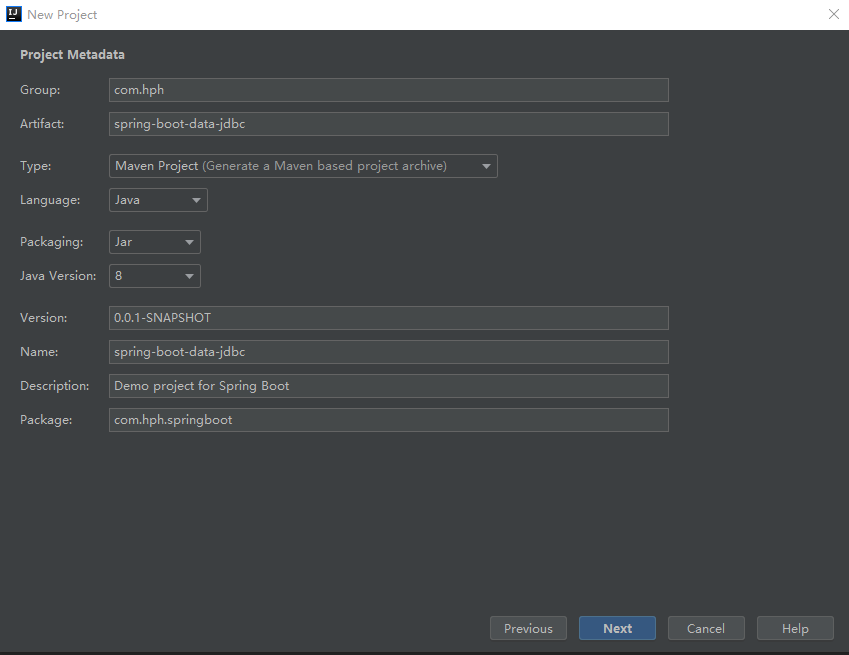
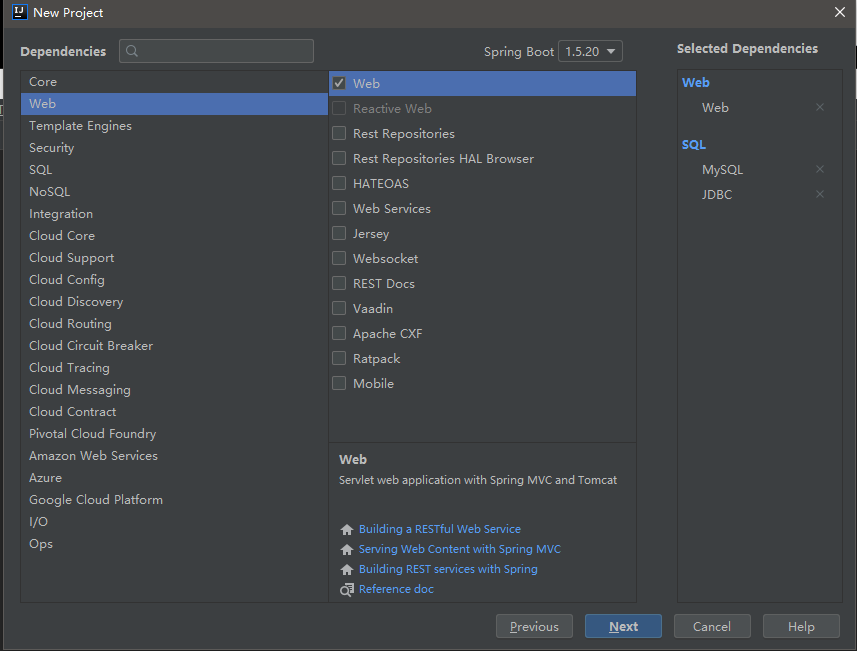
在Maven中会多依赖
1
2
3
4
5
6
7
8
9
10
| <dependency>
<groupId>org.springframework.boot</groupId>
<artifactId>spring-boot-starter-jdbc</artifactId>
</dependency>
<dependency>
<groupId>mysql</groupId>
<artifactId>mysql-connector-java</artifactId>
<scope>runtime</scope>
</dependency>
|
application.yml的配置文件关于JDBC的
1
2
3
4
5
6
| spring:
datasource:
username: root
password: 123456
url: jdbc:mysql://192.168.1.110:3306/jdbc
driver-class-name: com.mysql.jdbc.Driver
|
测试
1
2
3
4
5
6
7
8
9
10
11
12
13
14
15
16
17
18
19
20
21
22
23
24
25
26
27
| package com.hph.springboot;
import org.junit.Test;
import org.junit.runner.RunWith;
import org.springframework.beans.factory.annotation.Autowired;
import org.springframework.boot.test.context.SpringBootTest;
import org.springframework.test.context.junit4.SpringRunner;
import javax.sql.DataSource;
import java.sql.Connection;
import java.sql.SQLException;
@RunWith(SpringRunner.class)
@SpringBootTest
public class SpringBootDataJdbcApplicationTests {
@Autowired
DataSource dataSource;
@Test
public void contextLoads() throws SQLException {
System.out.println(dataSource.getClass());
Connection connection = dataSource.getConnection();
System.out.println(connection);
}
}
|

默认是用org.apache.tomcat.jdbc.pool.DataSource作为数据源;数据源的相关配置都在DataSourceProperties里面;
自动配置
1
2
3
4
5
6
7
8
9
10
11
12
13
14
15
16
17
18
19
20
21
22
23
24
25
26
|
@Configuration
@ConditionalOnClass(org.apache.tomcat.jdbc.pool.DataSource.class)
@ConditionalOnMissingBean(DataSource.class)
@ConditionalOnProperty(name = "spring.datasource.type",
havingValue = "org.apache.tomcat.jdbc.pool.DataSource", matchIfMissing = true)
static class Tomcat {
@Bean
@ConfigurationProperties(prefix = "spring.datasource.tomcat")
public org.apache.tomcat.jdbc.pool.DataSource dataSource(
DataSourceProperties properties) {
org.apache.tomcat.jdbc.pool.DataSource dataSource = createDataSource(
properties, org.apache.tomcat.jdbc.pool.DataSource.class);
DatabaseDriver databaseDriver = DatabaseDriver
.fromJdbcUrl(properties.determineUrl());
String validationQuery = databaseDriver.getValidationQuery();
if (validationQuery != null) {
dataSource.setTestOnBorrow(true);
dataSource.setValidationQuery(validationQuery);
}
return dataSource;
}
}
|
1、参考DataSourceConfiguration,根据配置创建数据源,默认使用Tomcat连接池;可以使用spring.datasource.type指定自定义的数据源类型;
2、SpringBoot默认可以支持;
1
| org.apache.tomcat.jdbc.pool.DataSource HikariDataSource BasicDataSource、
|
3、自定义数据源类型
1
2
3
4
5
6
7
8
9
10
11
12
13
|
@ConditionalOnMissingBean(DataSource.class)
@ConditionalOnProperty(name = "spring.datasource.type")
static class Generic {
@Bean
public DataSource dataSource(DataSourceProperties properties) {
return properties.initializeDataSourceBuilder().build();
}
}
|
4、DataSourceInitializer:ApplicationListener
runSchemaScripts();运行建表语句;
1
2
3
4
5
6
7
8
9
10
11
12
13
14
15
16
17
18
19
20
21
22
| private void runSchemaScripts() {
List<Resource> scripts = getScripts("spring.datasource.schema",
this.properties.getSchema(), "schema");
if (!scripts.isEmpty()) {
String username = this.properties.getSchemaUsername();
String password = this.properties.getSchemaPassword();
runScripts(scripts, username, password);
try {
this.applicationContext
.publishEvent(new DataSourceInitializedEvent(this.dataSource));
if (!this.initialized) {
runDataScripts();
this.initialized = true;
}
}
catch (IllegalStateException ex) {
logger.warn("Could not send event to complete DataSource initialization ("
+ ex.getMessage() + ")");
}
}
}
|
runDataScripts();运行插入数据的sql语句;
1
2
3
4
5
6
7
| private void runDataScripts() {
List<Resource> scripts = getScripts("spring.datasource.data",
this.properties.getData(), "data");
String username = this.properties.getDataUsername();
String password = this.properties.getDataPassword();
runScripts(scripts, username, password);
}
|
1
2
3
4
5
6
7
8
9
10
11
12
13
14
|
private List<Resource> getScripts(String propertyName, List<String> resources,
//fallback 就是schema
String fallback) {
if (resources != null) {
return getResources(propertyName, resources, true);
}
String platform = this.properties.getPlatform();
List<String> fallbackResources = new ArrayList<String>();
fallbackResources.add("classpath*:" + fallback + "-" + platform + ".sql");
fallbackResources.add("classpath*:" + fallback + ".sql");
return getResources(propertyName, fallbackResources, false);
}
|
1
2
3
4
5
6
| schema-*.sql、data-*.sql
默认规则:schema.sql,schema-all.sql;
可以使用
schema:
- classpath:department.sql
指定位置
|
1
2
3
4
5
6
7
8
9
10
| SET FOREIGN_KEY_CHECKS=0;
DROP TABLE IF EXISTS `department`;
CREATE TABLE `department` (
`id` int(11) NOT NULL AUTO_INCREMENT,
`departmentName` varchar(255) DEFAULT NULL,
PRIMARY KEY (`id`)
) ENGINE=InnoDB AUTO_INCREMENT=1 DEFAULT CHARSET=utf8;
|
未启动Run方法之前


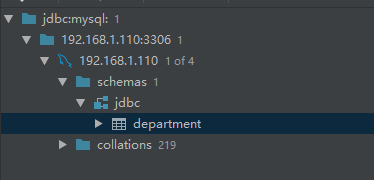
如果你想运行指定的sql文件可以在配置文件中指定
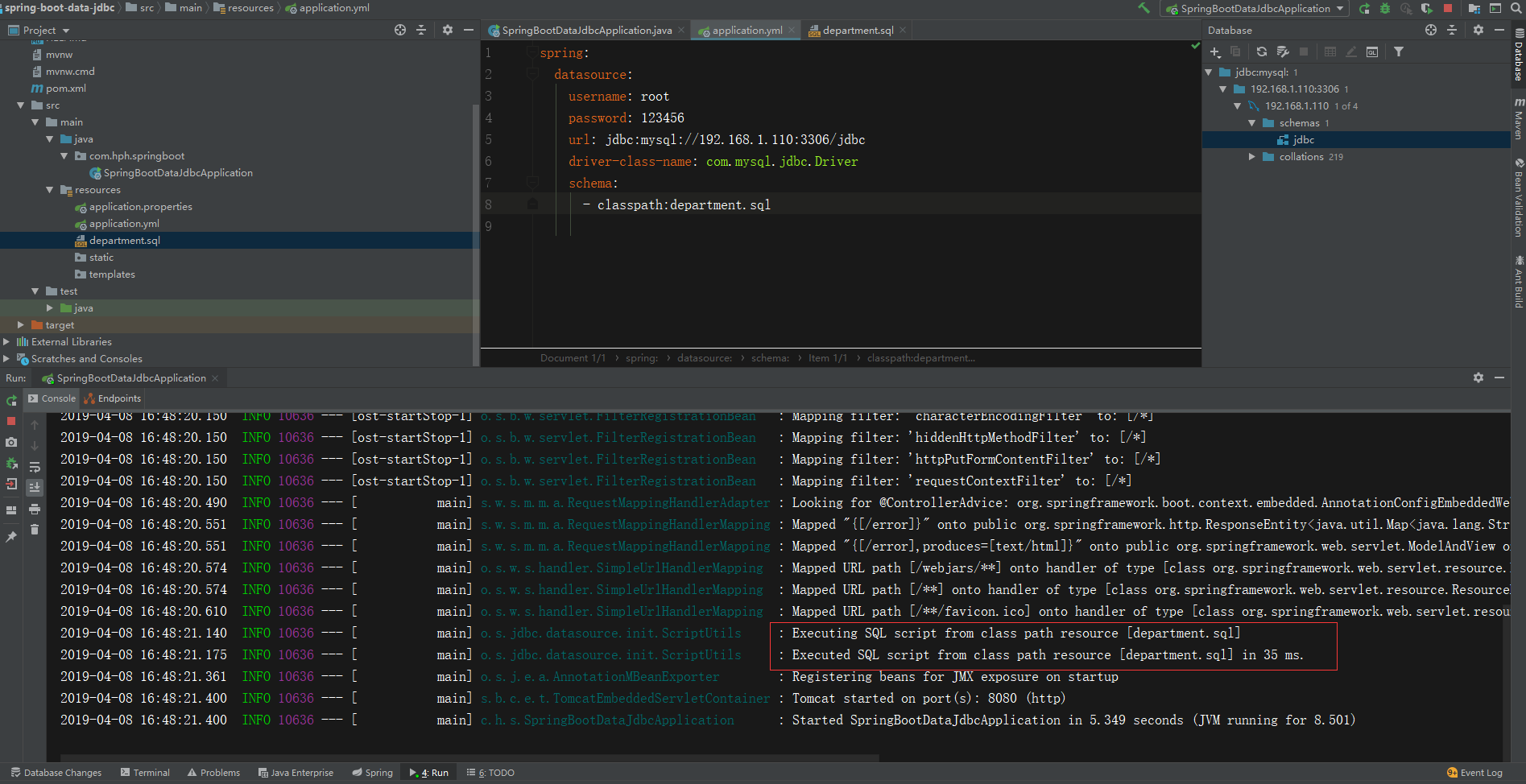
执行成功
JdbcTemplate
操作数据库:自动配置了JdbcTemplate操作数据库
1
2
3
4
5
6
7
8
9
10
11
12
13
14
15
16
17
18
19
20
21
22
23
24
25
26
| @Configuration
@ConditionalOnClass({ DataSource.class, JdbcTemplate.class })
@ConditionalOnSingleCandidate(DataSource.class)
@AutoConfigureAfter(DataSourceAutoConfiguration.class)
public class JdbcTemplateAutoConfiguration {
private final DataSource dataSource;
public JdbcTemplateAutoConfiguration(DataSource dataSource) {
this.dataSource = dataSource;
}
@Bean
@Primary
@ConditionalOnMissingBean(JdbcOperations.class)
public JdbcTemplate jdbcTemplate() {
return new JdbcTemplate(this.dataSource);
}
@Bean
@Primary
@ConditionalOnMissingBean(NamedParameterJdbcOperations.class)
public NamedParameterJdbcTemplate namedParameterJdbcTemplate() {
return new NamedParameterJdbcTemplate(this.dataSource);
}
}
|
数据库准备

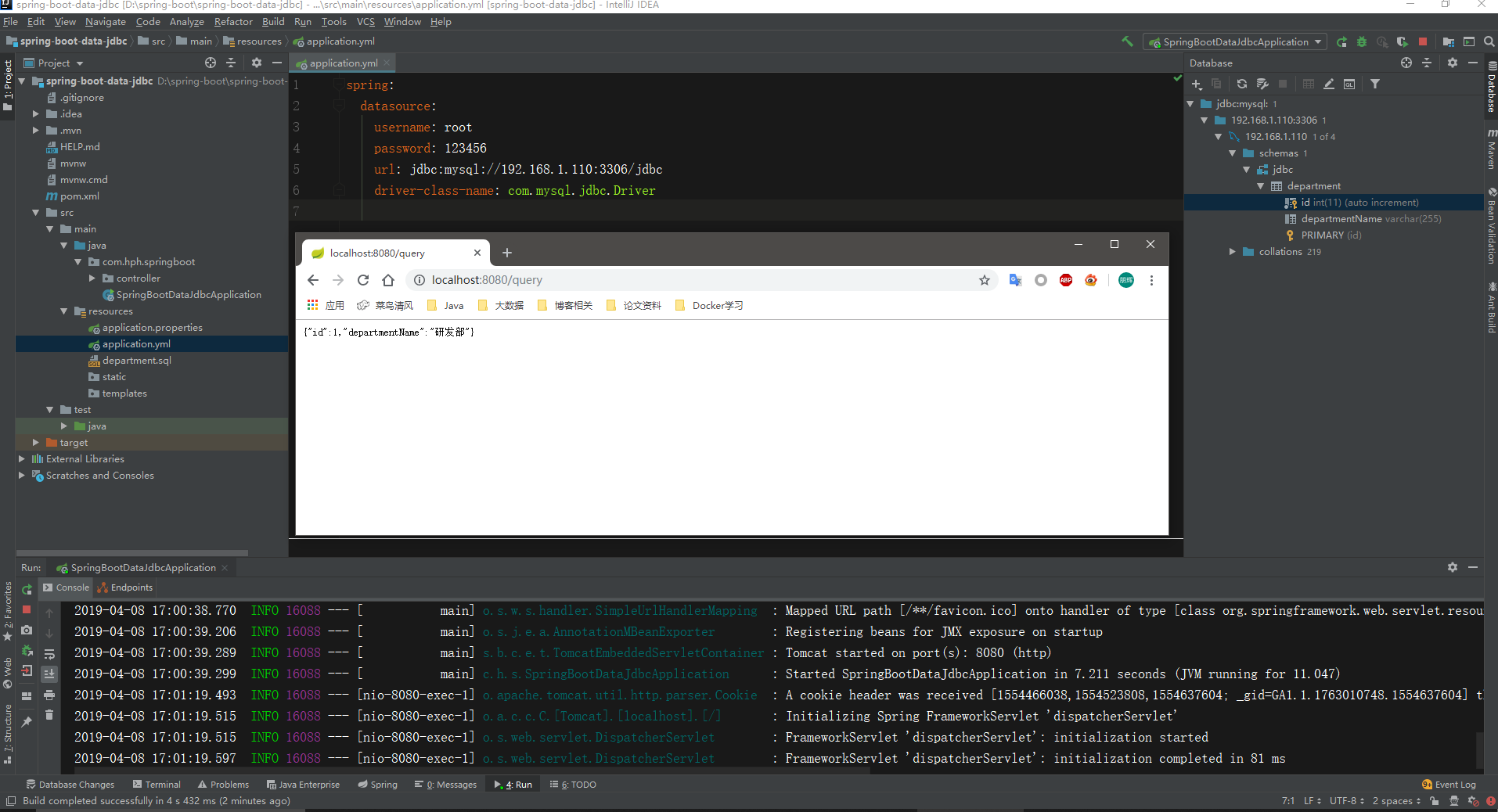
注意要取消application.yml中指定sql的配置,因为这样重新运行表会重新创建,消失。
整合Druid数据源
简介
DRUID是阿里巴巴开源平台上一个数据库连接池实现,它结合了C3P0、DBCP、PROXOOL等DB池的优点,同时加入了日志监控,可以很好的监控DB池连接和SQL的执行情况,可以说是针对监控而生的DB连接池(据说是目前最好的连接池)
步骤
在pom文件中加入Druid依赖
1
2
3
4
5
| <dependency>
<groupId>com.alibaba</groupId>
<artifactId>druid</artifactId>
<version>1.1.16</version>
</dependency>
|
测试

以成功更换
Debug
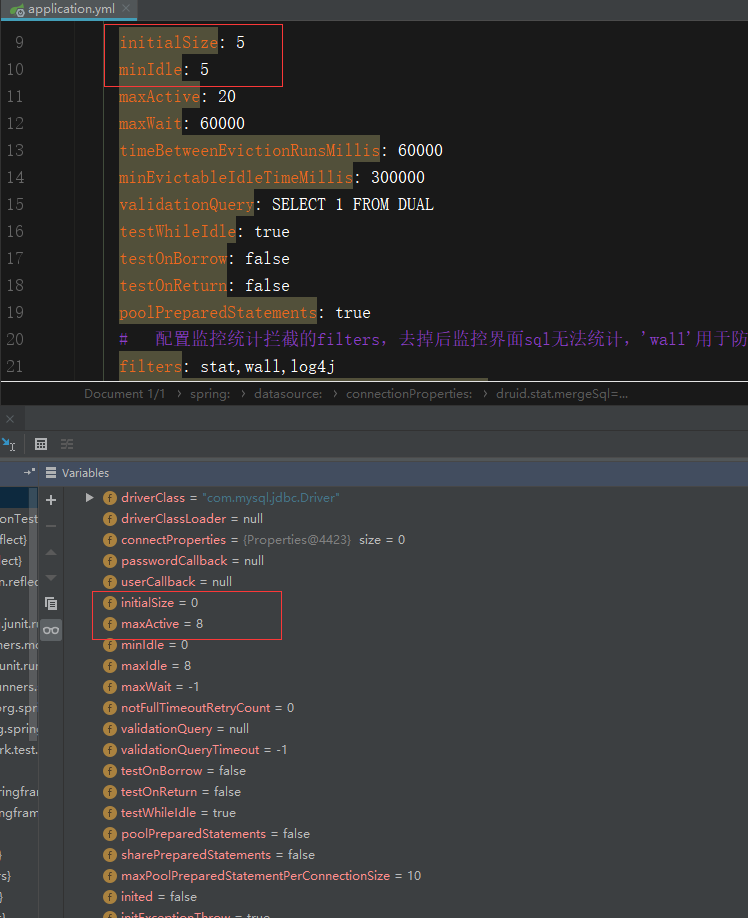
发现配置未生效,我们需要编写一个类来实现它。
1
2
3
4
5
6
7
8
9
10
11
12
13
14
15
16
17
18
19
| package com.hph.springboot.config;
import com.alibaba.druid.pool.DruidDataSource;
import org.springframework.boot.context.properties.ConfigurationProperties;
import org.springframework.context.annotation.Bean;
import org.springframework.context.annotation.Configuration;
import javax.sql.DataSource;
@Configuration
public class DruidConfig {
@ConfigurationProperties(prefix = "spring.datasource")
@Bean
public DataSource druid(){
return new DruidDataSource();
}
}
|

监控
在DruidConfig中
1
2
3
4
5
6
7
8
9
10
11
12
13
14
15
16
17
18
19
20
21
22
23
24
25
26
27
28
29
30
31
32
33
34
35
36
37
38
39
40
41
42
43
44
45
46
47
48
49
50
51
52
53
54
55
56
57
58
| package com.hph.springboot.config;
import com.alibaba.druid.pool.DruidDataSource;
import com.alibaba.druid.support.http.StatViewServlet;
import com.alibaba.druid.support.http.WebStatFilter;
import org.springframework.boot.context.properties.ConfigurationProperties;
import org.springframework.boot.web.servlet.FilterRegistrationBean;
import org.springframework.boot.web.servlet.ServletRegistrationBean;
import org.springframework.context.annotation.Bean;
import org.springframework.context.annotation.Configuration;
import javax.sql.DataSource;
import java.util.Arrays;
import java.util.HashMap;
import java.util.Map;
@Configuration
public class DruidConfig {
@ConfigurationProperties(prefix = "spring.datasource")
@Bean
public DataSource druid(){
return new DruidDataSource();
}
@Bean
public ServletRegistrationBean statViewServlet(){
ServletRegistrationBean bean = new ServletRegistrationBean(new StatViewServlet(), "/druid/*");
Map<String,String> initParams = new HashMap<>();
initParams.put("loginUsername","admin");
initParams.put("loginPassword","123456");
initParams.put("allow","");
initParams.put("deny","192.168.1.110");
bean.setInitParameters(initParams);
return bean;
}
@Bean
public FilterRegistrationBean webStatFilter(){
FilterRegistrationBean bean = new FilterRegistrationBean();
bean.setFilter(new WebStatFilter());
Map<String,String> initParams = new HashMap<>();
initParams.put("exclusions","*.js,*.css,/druid/*");
bean.setInitParameters(initParams);
bean.setUrlPatterns(Arrays.asList("/*"));
return bean;
}
}
|
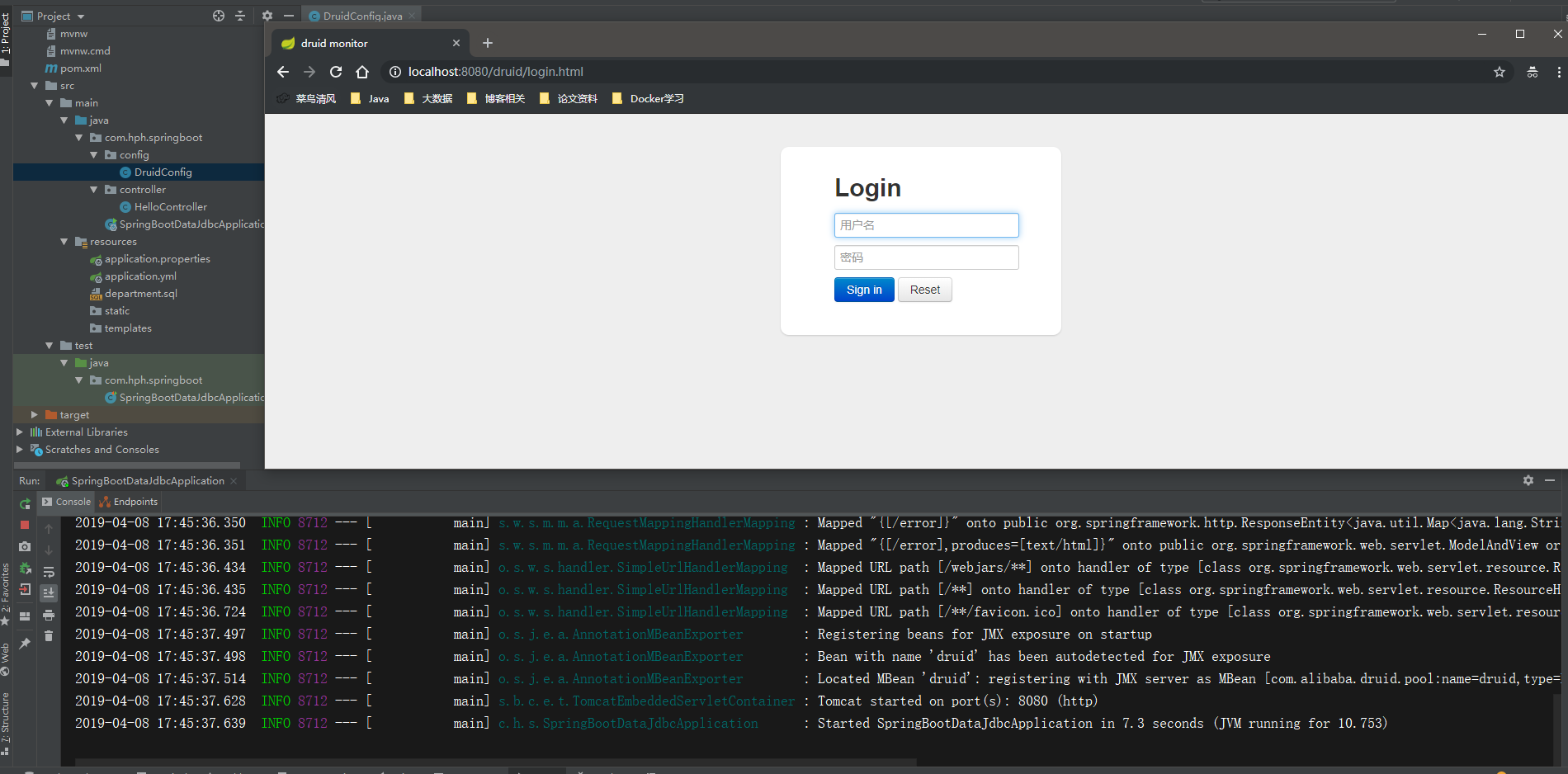


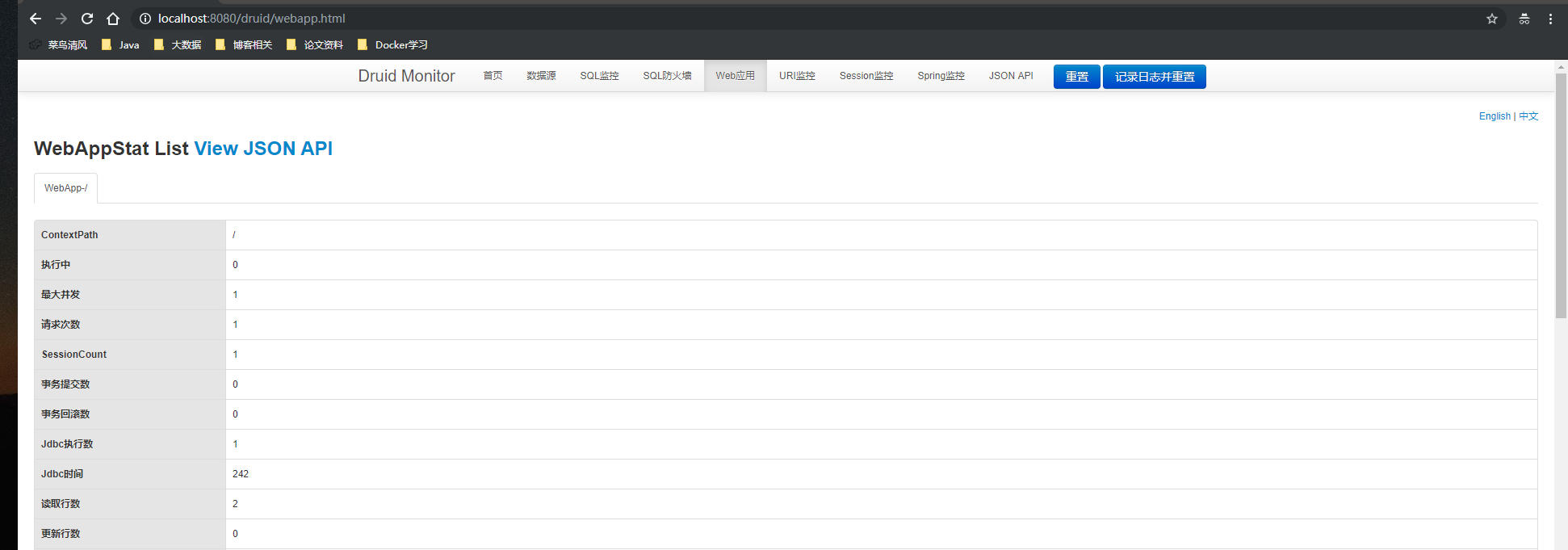
Web中也可以查看我们JDBC的执行次数。























 本文介绍如何在SpringBoot项目中配置Mysql数据库访问并集成Druid连接池,包括依赖添加、配置文件设置及监控页面搭建。
本文介绍如何在SpringBoot项目中配置Mysql数据库访问并集成Druid连接池,包括依赖添加、配置文件设置及监控页面搭建。
















 1550
1550

 被折叠的 条评论
为什么被折叠?
被折叠的 条评论
为什么被折叠?








